#Monitor Modular
Explore tagged Tumblr posts
Text

The Bently Nevada 3500 System Machinery Condition Monitor Modular from Auto2mation is a trusted solution for continuous monitoring of rotating equipment. Designed for high performance and reliability, this modular system helps detect potential machine issues early, reducing unplanned downtime and maintenance costs. It offers advanced vibration analysis, flexible configuration, and seamless integration with plant systems. Ideal for industries like oil & gas, power, and manufacturing, the 3500 system ensures safer operations and longer equipment life. With real-time monitoring and data collection, it supports smarter decision-making and improved machinery health. Choose Auto2mation for dependable machinery protection solutions.
#industrial automation#industrial equipment#industrial spare parts#industrial#automation#industrial and marine automation#industrial parts supplier#industrial innovation#automation solutions#Marine Automation#marine equipment#marine spare parts#auto2mation#Bently Nevada#Monitor Modular#Electronic components
0 notes
Text
Innovative Features in Photovoltaic Inverters for Efficient Solar Power
Hello everyone! As a renewable energy enthusiast, I am excited to discuss the advancements in photovoltaic inverters, particularly focusing on various brands in the market. The market is evolving with innovative solutions that enhance efficiency and reliability in solar power systems for commercial spaces.
I believe that features such as smart monitoring systems, enhanced energy conversion rates, and modular designs can significantly improve the user experience. Additionally, incorporating user-friendly interfaces and robust safety mechanisms can make solar power solutions even more appealing for businesses.
What are some innovative features you would love to see in photovoltaic inverters that could contribute to more efficient solar power utilization in commercial spaces? Let’s share our thoughts and ideas!
0 notes
Text
The Best Ergonomic Home Office Furniture Recommended to Content Creators

Dubai-based content creators, elevate your productivity and comfort with ergonomic home office furniture. Invest in high-quality ergonomic chairs, electric adjustable desks, modern supportive accessories and custom storage cabinets. All these come together to reduce physical strain and enhance your creative workflow.
In Dubai's competitive creative scene, a well-designed ergonomic workspace is essential for staying ahead and producing top-notch content.
Transform your home office today and experience the benefits of a comfortable and efficient work environment.
#modern office furniture#office ergonomics#office furniture dubai#office furniture#dubai office furniture#content creators Solutions#Ergonomic home office furniture#Office furniture for Content Creators#Electric Adjustable Desks#Ergonomic chairs#Modern Ergonomic furniture#Benefit Ergonomic Furniture#modular office furniture#Best Home office Furniture#Recommended Home Office Furniture#Adjustable Desks#Modern Ergonomic Desks#standing Desks#standing desks dubai#sit to stand Desks#affordable ergonomic chairs#affordable office furniture#Modern desk accessories#Dual interactive monitor Arm#under desk cables#content creators furniture solutions#Home Office Solutions#Seating Solutions#Dubai Content Creators#Work From Home Furniture
0 notes
Text

Explore $168.29 billion Cleanroom Technology Market: Get exclusive insights on key market trends, segments, geographical analysis, & competitive analysis!
#Cleanroom Technology Market#Cleanroom Technology#Modular Cleanroom Systems#Cleanroom System#Universal Cleanroom Technologies#Portable Cleanroom#Cleanroom Monitoring System
0 notes
Text
Designing Your Dream: The Art of Custom Cold Room Design
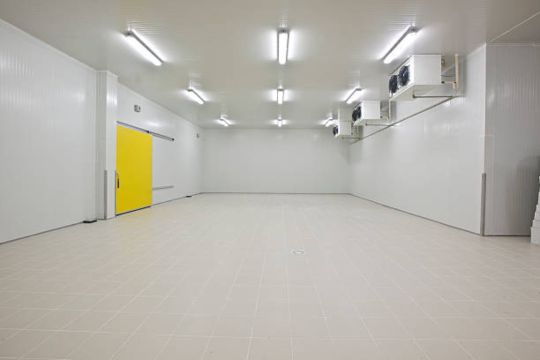
When it comes to preserving perishable goods, one size certainly does not fit all. That's where custom cold room design steps in, offering tailored solutions to meet the unique needs of diverse industries and businesses. In this article, we'll delve into the world of Custom Cold Room Design, exploring its benefits, considerations, and the transformative impact it can have on your operations.
Unveiling the Essence of Custom Cold Room Design
Imagine a space that perfectly aligns with your needs: a cold room that seamlessly integrates into your workflow, maximizing efficiency and minimizing waste. Custom cold room design makes this vision a reality, offering bespoke solutions tailored to your specific requirements. Think of it as the difference between off-the-rack and made-to-measure: while both serve a purpose, custom design ensures a perfect fit, optimizing functionality and performance.
The Purpose of Custom Cold Room Design
At its core, custom cold room design is all about functionality and efficiency. Whether you're storing fresh produce, pharmaceuticals, or floral arrangements, the goal is the same: to create an environment that maintains optimal temperature and humidity levels, preserving the integrity of your goods. Customization allows you to design a cold room that aligns with your workflow, space constraints, and operational needs, maximizing productivity and minimizing costs.
The Components of Custom Cold Room Design
Custom cold room design involves careful consideration of various components, each playing a crucial role in the overall functionality and performance of the system:
Insulation Materials: Choosing the right insulation materials is essential for maintaining consistent temperatures and minimizing energy consumption. Custom designs allow you to select materials that offer the best combination of thermal efficiency and durability for your specific application.
Cooling Systems: From traditional refrigeration units to advanced HVAC technologies, custom cold room design offers flexibility in selecting the most suitable cooling system for your needs. Whether it's a split-system configuration or a centralized chiller plant, customization ensures optimal performance and energy efficiency.
Layout and Configuration: Custom designs allow you to optimize the layout and configuration of your cold room to maximize space utilization and accessibility. Whether you need a walk-in cooler, freezer, or combination unit, customization ensures that every square foot is utilized effectively.
Unlocking the Benefits: Why Choose Custom Cold Room Design?
But what sets custom cold room design apart from pre-fabricated options? Let's explore the benefits that make it a preferred choice for businesses across various industries:
Tailored Solutions
Custom cold room design offers tailored solutions that are specifically designed to meet your unique needs. Whether you require specialized shelving, custom door sizes, or specific temperature ranges, customization ensures that every aspect of your cold room is optimized for your requirements.
Enhanced Efficiency
By optimizing the design and layout of your cold room, custom solutions can significantly enhance efficiency and productivity. Streamlined workflows, optimized storage capacity, and energy-efficient components all contribute to reduced operating costs and increased profitability.
Future-Proofing
Custom cold room design allows for future-proofing your operations by accommodating potential growth and changes in your business needs. Whether you're expanding your product lines or scaling up your operations, a custom-designed cold room can adapt to meet your evolving requirements, minimizing the need for costly renovations or upgrades down the line.
Applications Across Industries: Where Custom Cold Room Design Shines
Custom cold room design finds applications across a wide range of industries, each benefiting from tailored solutions that meet their specific needs:
Food and Beverage: From restaurants and catering businesses to food processing facilities and cold chain logistics, custom cold room design ensures the freshness and safety of perishable goods throughout the supply chain.
Healthcare: Hospitals, clinics, and pharmaceutical manufacturers rely on custom cold room design to store medications, vaccines, and biological samples at precise temperatures, ensuring efficacy and compliance with regulatory requirements.
Floral Industry: Florists and floral wholesalers utilize custom cold room design to extend the shelf life of fresh flowers and plants, preserving their freshness and beauty until they reach the customer's hands.
Conclusion: Elevating Your Operations with Custom Cold Room Design
In today's competitive business landscape, efficiency, and flexibility are key to success. Custom cold room design offers a tailored solution that aligns with your unique needs, maximizing efficiency, and minimizing costs. So, whether you're in the food and beverage, healthcare, or floral industry, consider the transformative impact that custom cold room design can have on your operations, and take the first step toward designing your dream cold room today.
#Cold Room Temperature Monitoring#Floral Preservation Cold Rooms#Meat and Seafood Cold Storage#Emergency Cold Room Repairs#Modular Cold Room Extensions#Energy-Saving Refrigeration Techni
1 note
·
View note
Text



Casanova Cave Plus & Comfy Gamer Plus - CC Addons for Casanova Cave and Comfy Gamer
Hello! Here's my first CC release of the year!
These two kits are probably my current favourites, so I had to make addons for them.
The Casanova Cave addon provides more living room seating options, as well as a modular shelving unit inspired by the existing TV that is included in the kit.
The Comfy Gamer addon contains computers with more monitors, new desks with storage space, as well as a couple of new shelf options.
Merged packages and separated zip versions can be downloaded below. Only download one option for each kit.
Comfy Gamer Plus
Merged Package
Separated ZIP
Casanova Cave Plus
Merged Package
Separated ZIP
Use my Creator Code: IllogicalSims on the EA App to support me! I'll earn a 5% commission on purchases #EAPartner
Install
To install, place the .package files into your Mods folder found, by default, in My Documents > Electronic Arts > The Sims 4 > Mods. Alternatively, you can place the individual .package files from the separated ZIP into it’s own folder within the Mods folder to keep things tidy.
As usual, you will need to have the respective kits in order for the addons to appear in-game.
3K notes
·
View notes
Text
Safeguard Your Electronics with a Robust Battery Backup System
In a digital age where we're dependent on electronic devices for work and leisure, unexpected power disruptions can be a real buzzkill. But fear not! The answer to your power-related worries lies in one powerful solution: the battery backup system. In this article, we'll delve into the world of battery backup systems and highlight why they are a must-have for anyone seeking uninterrupted power.
The Power of Battery Backup Systems: Imagine you're in the middle of an important video call or finalizing an important document when suddenly, darkness envelops your room. Enter the superhero of electronics – the battery backup system. This ingenious device steps in immediately during power outages, ensuring your devices stay online and operational.

Exploring Different Types of Battery Backup Systems: When it comes to safeguarding your electronics, not all battery backup systems are created equal. There are three primary types:
Offline/Standby Systems: Basic yet effective, they're perfect for safeguarding home devices like computers and entertainment systems.
Line-Interactive Systems: A notch up in protection, these systems offer voltage regulation and battery power during outages, ideal for small businesses.
Online/Double-Conversion Systems: The cream of the crop, they provide continuous AC-to-DC conversion, making them indispensable for critical operations like data centers.
Crucial Components of a Battery Backup System: Let's crack open the anatomy of a battery backup system:
Batteries: The powerhouse that stores energy, ready to leap into action when the main power falters.
Inverters: These wizards convert battery-stored DC power into usable AC power for your devices.
Automatic Transfer Switches: The gatekeepers that detect power disruptions and swiftly switch to battery power, ensuring seamless operations.
Advantages Galore with Battery Backup Systems:
Device Defender: Shield your devices from power surges and voltage spikes.
Data Protector: Keep your data safe during sudden outages, whether you're working from home or running a business.
Operational Savior: Crucial processes in businesses like servers and communication systems remain unaffected and uninterrupted.
Life Extender: Ensure the longevity of your electronic gadgets with consistent power supply.
Stress Reliever: Bid adieu to power-related stress as you continue your tasks seamlessly.
Choosing the Right Battery Backup System: The key to a harmonious power backup experience lies in selecting the right system for your needs:
Load Capacity: Calculate the combined power requirements of all connected devices.
Runtime Consideration: Determine how long the battery can sustain your devices during an outage.
Device Compatibility: Match the power needs of your devices with the capabilities of the battery backup system.
Simple Setup and Easy Maintenance: Installing a battery backup system isn't rocket science. Stick to the manufacturer's instructions or consult a pro for complex setups. Regular maintenance includes battery checks and system functionality tests.
Real-Life Stories:
Home Heroics: A homeowner's crucial work project was saved by a battery backup system during an unexpected outage.
Business Triumph: An online store didn't lose a penny in revenue during a blackout because their online operations were backed by a battery backup system.
Medical Marvel: Hospitals rely on these systems to ensure life-saving medical equipment remains operational, even during power failures.
Battery Backup vs. Generators: Making the Choice: While generators offer prolonged power supply, battery backup systems are compact, noise-free, and provide instant power. They're a cost-effective solution for short-duration outages.
Conclusion : When darkness threatens to disrupt your digital world, a dependable battery backup system steps in as your guardian angel. Whether you're safeguarding your home office, ensuring business continuity, or protecting critical systems, investing in a robust battery backup system is a smart move. Empower yourself with uninterrupted power and embrace the future of electronics resilience.
#battery backup#ups uninterruptible power supply#line interactive ups#SLA Battery#VRLA Battery#automatic voltage regulator#data center ups system#double conversion ups#ups monitoring system#online ups Malaysia#Automatic voltage stabilizer#UPS Battery#ups for server room#ups delivery Malaysia#ups rack#ups true online#ups management software#modular ups Malaysia#online ups system#inverex ups#batterybackup#ups#battery#solarpower#batterypower#saveelectricity#upssystems#energyefficiency#solar#upsinverter
0 notes
Text
Good News - August 15-21
Like these weekly compilations? Tip me at $kaybarr1735 or check out my new(ly repurposed) Patreon!
1. Smart hives and dancing robot bees could boost sustainable beekeeping

“[Researchers] developed a digital comb—a thin circuit board equipped with various sensors around which bees build their combs. Several of these in each hive can then transmit data to researchers, providing real-time monitoring. [… Digital comb] can [also] be activated to heat up certain parts of a beehive […] to keep the bees warm during the winter[…. N]ot only have [honeybee] colonies reacted positively, but swarm intelligence responds to the temperature changes by reducing the bees' own heat production, helping them save energy.”
2. Babirusa pigs born at London Zoo for first time

“Thanks to their gnarly tusks […] and hairless bodies, the pigs are often called "rat pigs" or "demon pigs” in their native Indonesia[….] “[The piglets] are already looking really strong and have so much energy - scampering around their home and chasing each other - it’s a joy to watch. They’re quite easy to tell apart thanks to their individual hair styles - one has a head of fuzzy red hair, while its sibling has a tuft of dark brown hair.””
3. 6,000 sheep will soon be grazing on 10,000 acres of Texas solar fields

“The animals are more efficient than lawn mowers, since they can get into the nooks and crannies under panel arrays[….] Mowing is also more likely to kick up rocks or other debris, damaging panels that then must be repaired, adding to costs. Agrivoltaics projects involving sheep have been shown to improve the quality of the soil, since their manure is a natural fertilizer. […] Using sheep instead of mowers also cuts down on fossil fuel use, while allowing native plants to mature and bloom.”
4. Florida is building the world's largest environmental restoration project

“Florida is embarking on an ambitious ecological restoration project in the Everglades: building a reservoir large enough to secure the state's water supply. […] As well as protecting the drinking water of South Floridians, the reservoir is also intended to dramatically reduce the algae-causing discharges that have previously shut down beaches and caused mass fish die-offs.”
5. The Right to Repair Movement Continues to Accelerate

“Consumers can now demand that manufacturers repair products [including mobile phones….] The liability period for product defects is extended by 12 months after repair, incentivising repairs over replacements. [… M]anufacturers may need to redesign products for easier disassembly, repair, and durability. This could include adopting modular designs, standardizing parts, and developing diagnostic tools for assessing the health of a particular product. In the long run, this could ultimately bring down both manufacturing and repair costs.”
6. Federal Judge Rules Trans Teen Can Play Soccer Just In Time For Her To Attend First Practice

“Today, standing in front of a courtroom, attorneys for Parker Tirrell and Iris Turmelle, two transgender girls, won an emergency temporary restraining order allowing Tirrell to continue playing soccer with her friends. […] Tirrell joined her soccer team last year and received full support from her teammates, who, according to the filing, are her biggest source of emotional support and acceptance.”
7. Pilot study uses recycled glass to grow plants for salsa ingredients

“"We're trying to reduce landfill waste at the same time as growing edible vegetables," says Andrea Quezada, a chemistry graduate student[….] Early results suggest that the plants grown in recyclable glass have faster growth rates and retain more water compared to those grown in 100% traditional soil. [… T]he pots that included any amount of recyclable glass [also] didn't have any fungal growth.”
8. Feds announce funding push for ropeless fishing gear that spares rare whales

“Federal fishing managers are promoting the use of ropeless gear in the lobster and crab fishing industries because of the plight of North Atlantic right whales. […] Lobster fishing is typically performed with traps on the ocean bottom that are connected to the surface via a vertical line. In ropeless fishing methods, fishermen use systems such an inflatable lift bag that brings the trap to the surface.”
9. Solar farms can benefit nature and boost biodiversity. Here’s how

“[… M]anaging solar farms as wildflower meadows can benefit bumblebee foraging and nesting, while larger solar farms can increase pollinator densities in surrounding landscapes[….] Solar farms have been found to boost the diversity and abundance of certain plants, invertebrates and birds, compared to that on farmland, if solar panels are integrated with vegetation, even in urban areas.”
10. National Wildlife Federation Forms Tribal Advisory Council to Guide Conservation Initiatives, Partnerships

“The council will provide expertise and consultation related to respecting Indigenous Knowledges; wildlife and natural resources; Indian law and policy; Free, Prior and Informed Consent[… as well as] help ensure the Federation’s actions honor and respect the experiences and sovereignty of Indigenous partners.”
August 8-14 news here | (all credit for images and written material can be found at the source linked; I don’t claim credit for anything but curating.)
#hopepunk#good news#honeybee#bees#technology#beekeeping#piglet#london#zoo#sheep#solar panels#solar energy#solar power#solar#florida#everglades#water#right to repair#planned obsolescence#trans rights#trans#soccer#football#recycling#plants#gardening#fishing#whales#indigenous#wildlife
137 notes
·
View notes
Text
Space Station Concepts: Space Operations Center
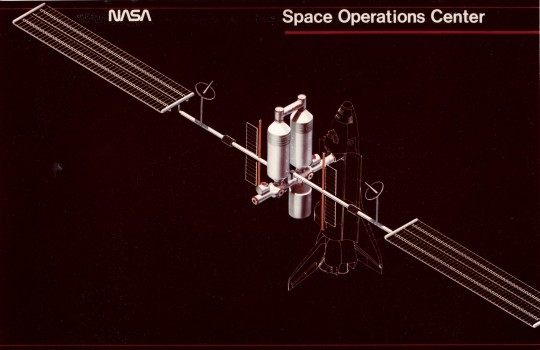

"The SOC is a self-contained orbital facility built up of several Shuttle-launched modules. With resupply, on-orbit refurbish- ment and orbit maintenance, it is capable of continuous operation for an indefinite period. In the nominal operational mode, the SOC is manned continuously, but unmanned operation is possible.
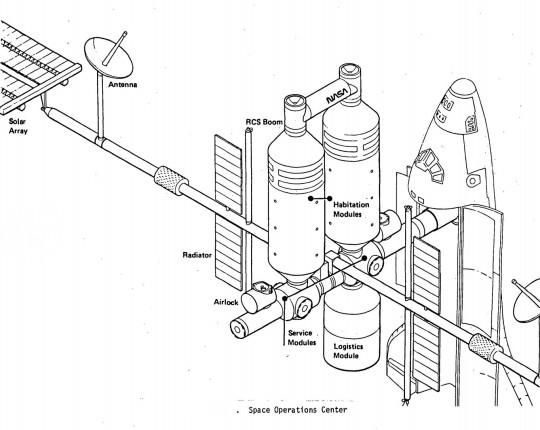
The present mission management and control process is characterized by a people-intensive ground monitoring and control operation involving large supporting ground information and control facilities and a highly- integrated ground-flight crew operation. In order to reduce dependence on Earth monitoring and control, the SOC would have to provide for increased systems monitoring; fault isolation and failure analysis, and the ability to store and call up extensive sets of data to support the onboard control of the vehicle; and the onboard capability for daily mission and other activity planning."

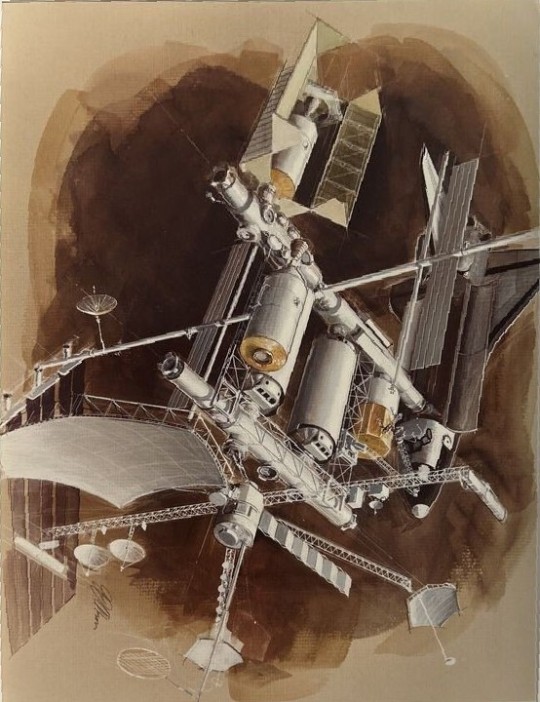

"Like most other space station studies from the mid/late 1970s its primary mission was the assembly and servicing of large spacecraft in Earth orbit -- not science. NASA/JSC signed a contract with Boeing in 1980 to further develop the design. Like most NASA space station plans, SOC would be assembled in orbit from modules launched on the Space Shuttle. The crew's tour of duty would have been 90 days. NASA originally estimated the total cost to be $2.7 billion, but the estimated cost had increased to $4.7 billion by 1981. SOC would have been operational by 1990.
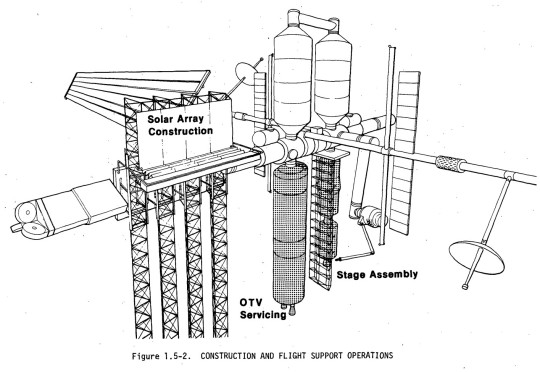
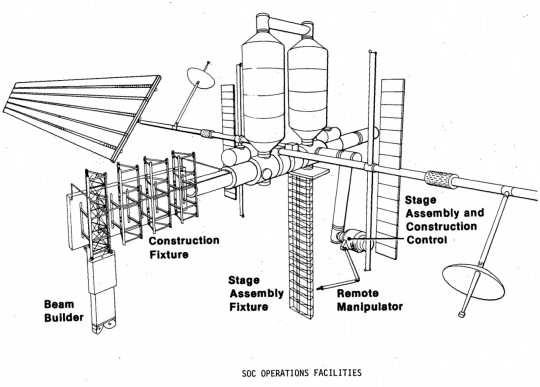

NASA's Johnson Spaceflight Center extended the Boeing contract in February 1982 to study a cheaper, modular, evolutionary approach to assembling the Space Operations Center. An initial power module would consist of solar arrays and radiators. The next launches would have delivered a space tug 'garage', two pressurized crew modules and a logistics module. The completed Space Operations Center also would have contained a satellite servicing and assembly facility and several laboratory modules. Even with this revised approach, however, the cost of the SOC program had grown to $9 billion. Another problem was Space Operations Center's primary mission: spacecraft assembly and servicing. The likely users (commercial satellite operators and telecommunications companies) were not really interested in the kind of large geostationary space platforms proposed by NASA. By 1983, the only enthusiastic users for NASA's space station plans were scientists working in the fields of microgravity research and life sciences. Their needs would dictate future space station design although NASA's 1984 station plans did incorporate a SOC-type spacecraft servicing facility as well."
Article by Marcus Lindroos, from astronautix.com: link

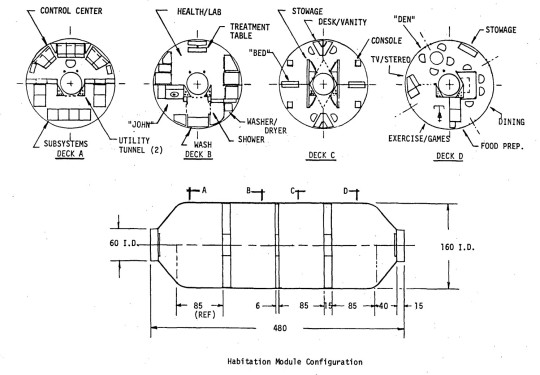


NASA ID: link, S79-10137
Boeing photo no. R-1859, link, link
#Space Operations Center#Space Station Freedom#Space Station Concept#Space Station#Concept Art#Space Station Program#Space#Earth#Space Shuttle#Orbiter#NASA#Space Shuttle Program#1979#1980s#my post
460 notes
·
View notes
Text



"It must be lonely knowing so much about us for nothing in return." fanart for the amazing fic "hammond's postulate" by unseriouscucumber, an alnst mech AU: archiveofourown.org/chapters/161...
bonus stuff--a dejected mizi 01 post sua's death, a very stupid ivantill joke, a very sad mizisua moment. the suits i imagine are modular and fitted with health-monitoring equipment, but then also feature sponsoring branding on the front and on the sleeve band.
24 notes
·
View notes
Text
Advanced Modular Operation Rooms by Global Medicare Systems – Enhancing Surgical Precision & Efficiency
Global Medicare Systems offers cutting-edge Modular Operation Rooms designed to meet international healthcare standards. Our modular OTs ensure optimal infection control, seamless integration of medical equipment, and superior airflow management. Built with high-quality materials and advanced technology, these operation theaters support quick installation, easy maintenance, and adaptability for future upgrades. Ideal for hospitals seeking reliability and hygiene in critical care environments, our solutions prioritize patient safety and staff comfort. Choose Global Medicare Systems for state-of-the-art Modular Operation Rooms that redefine surgical excellence.
0 notes
Text
Cleanroom Technology Market Projected to Reach $168.29 Billion by 2030

Meticulous Research®—a leading global market research company, published a report titled, 'Cleanroom Technology Market by Offering (System, Consumables), Type (Lab, Air Pressure Cleanroom, Modular Cleanroom, Portable Cleanroom), Industry (Medical Devices, Pharmaceuticals, Semiconductor and Electronics), and Geography - Global Forecast to 2030.’
According to the latest publication from Meticulous Research®, the cleanroom technology market is projected to reach $168.29 billion by 2030, with a CAGR of 16.9% from 2023 to 2030. This growth is driven by the increasing need for clean environments in industrial manufacturing, a focus on maintaining product yields by preventing contamination, and the rising use of microelectronics in healthcare and life sciences. Furthermore, the adoption of energy-efficient and advanced cleanroom technologies is expected to provide significant growth opportunities.
However, the market faces challenges such as the high costs associated with cleanroom systems and the complexities of upgrading and repairing aging cleanroom infrastructure.
The cleanroom technology market is segmented by offering, type, and industry, with evaluations of industry competitors and regional and country-level market analyses.
Market Segmentation:
By Offering:
Systems and Consumables: The consumables segment is expected to hold the largest share in 2023 due to the need for effective contamination control, single-use practices, safety requirements, productivity gains, and regulatory compliance. The systems segment is anticipated to grow at the highest CAGR, driven by increased hygiene awareness, stricter health and safety regulations, growth in commercial and institutional cleaning sectors, technological advancements, and a focus on sustainability and eco-friendly solutions.
By Type:
Clean Labs, Air Pressure Cleanrooms, Modular Cleanrooms, Pass-Throughs, Portable Cleanrooms, and Others: Modular cleanrooms are projected to hold the largest market share in 2023 due to their flexibility, scalability, cost-effectiveness, quick installation, portability, regulatory compliance, and customizability. Clean labs are expected to grow at the highest CAGR, attributed to their robust construction, superior environmental and contamination control, and the growth of various industries and research activities.
By Industry:
Semiconductor and Electronics, Healthcare and Life Sciences, Meteorology, Food and Beverages, Manufacturing, Aerospace and Defense, Research Facilities, Optics, Precision Mechanics, Government Organizations, and Others: The healthcare and life sciences segment is expected to dominate the market in 2023, driven by stringent regulatory requirements, a focus on product quality and safety, critical R&D activities, patient care needs, increasing demand for PPE, and overall healthcare expenditure growth. The semiconductors and electronics segment is projected to experience the highest CAGR, driven by the rising demand for high-quality, reliable electronic components and devices, memory and storage devices, and the complexity of semiconductor manufacturing.
Geographical Analysis:
North America: Expected to hold the largest market share in 2023, driven by the presence of major key players and increased awareness of nutraceuticals and cosmeceuticals. Stringent medical device approval regulations in the U.S. further boost demand for cleanroom technology.
Asia-Pacific: Anticipated to register the highest CAGR due to rapid population growth, urbanization, and environmental degradation. The rising demand for cleanroom technologies to ensure clean and potable environments is expected to propel market growth in this region.
Key Players:
Major companies operating in the cleanroom technology market include Azbil Corporation (Japan), Ardmac Ltd. (U.S.), Clean Room Depot, Inc. (U.S.), Labconco Corporation (U.S.), Clean Air Products (U.S.), AES Clean Technology, Inc. (U.S.), Illinois Tool Works Inc. (U.S.), Terra Universal, Inc. (U.S.), Clean Rooms International, Inc. (U.S.), Connect 2 Cleanrooms Ltd. (U.K.), ABTech Inc. (U.S.), Modular Cleanrooms, Inc. (U.S.), BASX Solutions (U.S.), and Exyte Technology GmbH (Germany).
Download Sample Report Here @ https://www.meticulousresearch.com/download-sample-report/cp_id=5542
Key questions answered in the report-
Which are the high-growth market segments based on offering, type, and industry?
What was the historical market size for cleanroom technology?
What are the market forecasts and estimates for the period 2023–2030?
What are the major drivers, restraints, opportunities, and challenges in the cleanroom technology market?
Who are the major players, and what shares do they hold in the cleanroom technology market?
How is the competitive landscape in the cleanroom technology market?
What are the recent developments in the cleanroom technology market?
What are the different strategies adopted by the major players in the cleanroom technology market?
What are the key geographic trends, and which are the high-growth countries?
Contact Us: Meticulous Research® Email- [email protected] Contact Sales- +1-646-781-8004 Connect with us on LinkedIn- https://www.linkedin.com/company/meticulous-research
#Cleanroom Technology Market#Cleanroom Technology#Modular Cleanroom Systems#Cleanroom System#Universal Cleanroom Technologies#Portable Cleanroom#Cleanroom Monitoring System
0 notes
Text






One of the most defining 16bit computers was introduced in June 1985.
ATARI ST 520
DESIGN HISTORY & STRATEGY
The Atari ST series was born in a turbulent time: Atari had just been acquired by Jack Tramiel, founder of Commodore, after leaving that company. Tramiel pushed for a quick-to-market product to compete with the Apple Macintosh and Commodore Amiga.
Development time: Less than one year — an aggressive schedule for a 16-bit GUI-based machine.
Initial models: The Atari 520ST was the first to ship, showcased at CES in 1985.
Innovative design: All-in-one casing (mainboard + keyboard), like the Amiga 500, but with better modularity (external floppy drive, monitor, etc.).
Former C=64 developer Shiraz Shivji led the design team. He tells a story about the Atari ST/Commodore Amiga history (source) "It is very interesting that the Warner Atari difficulties were due to Tramiel’s Commodore. The Commodore 64 was much more successful (I would say wildly successful) compared to the Atari Computers such as the 800 and the 400. We were also taking away sales from the video games division, the Atari 2600. Jay Miner was at Atari in the old days and was involved in the design of their products. He left Atari to design the Amiga. Atari had funded some of this effort and had an option to buy the Amiga. When we took over Atari in July 1984, the first order of business was to decide what to do with this option. The problem was that the Amiga was not quite ready and would need a lot of money to acquire. We decided to pass on Amiga, but this put enormous pressure on our own development team. Commodore, on the other hand, did not have an internally developed 32-bit graphics-oriented machine and did not have the confidence to develop the machine internally. They ended up buying Amiga for between $25-$30 million and spent a further $20 million or so and yet came out with a product a little after Atari. The roles were reversed, the Atari ST has a Commodore pedigree, while the Amiga has an Atari pedigree!"
MIDI AND MUSIC PRODUCTION
The 520ST included built-in MIDI ports — a revolutionary move. At the time, most other computers needed expensive third-party MIDI interfaces.
Key Software:
Steinberg Cubase – became the industry standard for MIDI sequencing.
Notator – early version of what later evolved into Logic Pro.
Pro 24, Dr. T's, and Hollis Trackman – widely used for composing, sequencing, and syncing synthesizers.
Used by Artists:
Fatboy Slim composed with the ST well into the 2000s.
Jean-Michel Jarre, Vangelis, The Chemical Brothers, and Underworld used it in studio setups.
Many studios kept an Atari ST just for MIDI due to its tight timing and reliability.
SOFTWARE ECOSYSTEM
TOS/GEM: A fast and responsive GUI OS that was very usable on 512KB of RAM.
Productivity apps:
Calamus DTP – high-quality desktop publishing
NeoDesk – an improved desktop GUI
GFA Basic – a powerful programming environment
Graphics tools:
Degas Elite, NeoChrome – pixel art, animation
Spectrum 512 – used clever tricks to display 512 colors
While the Amiga had better graphics and sound, many games were first developed for the ST, then ported to Amiga. Key games:
Dungeon Master – first-person RPG with real-time mechanics
Carrier Command, Starglider, Blood Money, Rick Dangerous
Flight simulators, strategy, and adventure games flourished
CULTURAL IMPACT
In Europe (especially the UK, Germany, France, and Hungary):
The ST became a cornerstone of bedroom coding, Demoscene, and music production.
Local software houses and users created a vibrant community around the machine.
The Atari ST was used in schools, small studios, and households well into the early '90s.
In education: The ST's affordability and easy-to-use software made it a favorite in European schools and computer labs.
DECLINE & LEGACY
By the early 1990s, the ST line was losing ground to IBM-compatible PCs and faster Amigas.
Later models like the STE, TT030, and Falcon 030 tried to revitalize the line, with limited success.
Atari shifted toward consoles (like the Jaguar) and left the computer market.
Long-term legacy:
The Atari ST's MIDI legacy lives on — it helped standardize digital music production workflows.
Many musicians and retrocomputing fans still collect and use STs today.
A vibrant retro software/demo scene remains active, especially in Europe.
#atari#atari st#anniversary#tech#technology#old tech#retrocomputing#retro computing#retro gaming#retrogaming#midi#cubase#calamus#notator#degas elite#16bit#Dungeon Master#Carrier Command#Starglider#Blood Money#Rick Dangerous#Flight simulators#80s#80s computer#fatboy slim#chemical brothers#jean michel jarre#vangelis
11 notes
·
View notes
Text
Projects continue apace. My current (Jan 2025) focuses are
Processing the paperwork for incorporation (LLC with long term goals of NFP or cooperative structuring)
We've moved onto product testing folks! Some of the things we're working on all designed in tandem with my lovely wife @loreofthejungle: cloth dolls and Creature Plushies (weighted and unweighted, all designed by @loreofthejungle and patterned by me!), stickers, embroidered pieces (buttons, pins, bookmarks, pendants), and scent pack pairings for other items
Continuing to develop the Pilot Program for Community Food Forestry as a protective feature against food insecurity in the region (build greenhouse and continue to build modular chicken run, monitor hurricane and flood resilience, track supply capacity and timeline, plant appropriate food crops and companion flora, discuss "food fridge" shed affiliation with local food banks and coordinate to fund the construction, etc)
Purchasing equipment for long term growth and expansion (carpentry tools, looms and spinning wheels, sewing findings and notions, wire and bead work equipment, smoker and hot house, etc)
Continue monitoring and documenting Canine Behavioral Rehabilitation model for maintenance of recovery from stress-related reactivity (track recovery of current subjects, monitor the human-canine clinical interactions and their role in prognosis and recovery, document the process and identify common areas of resistance, setback, or difficulty, etc)
Document and create educational/outreach material for Stress Modeling and anti-psych community mental health initiatives/alternatives suggested by the research
Maintain access to infusions (current access to specialist who can prescribe is delayed until Sept. 2026 with some possibility of sooner availability via consultation with non-specialist care management) to manage the severity of my OH/dysautonomia symptoms and reduce my risk of falling/head trauma
If you want to help me with my work or support me in doing what I do, there are a few options!
I accept cash donations and can currently do so digitally via: Venmo at morbidly-queerious, CashApp at $RazTalks
You can send digital gift cards to the email [email protected] from any of the following online shops: webstaurantstore.com, seedsavers.org, southernseeds.com, sowrightseeds.com, tractorsupply.com, rowhouseyarn.com, dickblick.com
It's not necessarily my preference due to the company practices, however here is an Amazon Wishlist for those who may prefer to purchase specific gifts or donations for the work. It includes low-, mid-, and high-budget options, and the most helpful items are typically either seeds or animal feed, but folks are always welcome to reach out and ask directly if there are any currently pressing needs!
As always, I would prefer people only support us if they can genuinely do so in comfort and without sacrifice. We do the work we are doing so that we and others can be safer, not for anyone to put themselves at risk to support us.
25 notes
·
View notes
Text
“Inside the Suit: Virtual Parents Night at Cadet Summer Camp”

Instructor PJ40E (calm, professional): Good evening, parents. I’m Instructor PJ40E, head of Cadet Operations. I know some of you have questions, concerns, and probably a few raised eyebrows. So tonight, we want to give you a transparent look at the suit your sons are training in—and why we believe it's one of the safest, most effective systems ever developed for young emergency responders.
Technician (smiling politely): I’m Marick Hollen from ValorTech Industries, the lead civilian contractor on the Cadet Exosuit program. I’ve worked on this system since prototype. And I can tell you—this is a suit built for precision, safety, and adaptability. Especially for young users.
Instructor PJ40E: Let’s begin with the obvious question: Why full-body armor?
Because your sons are being trained for high-stress environments—rescue, disaster relief, emergency medical response. The suit provides physical protection, of course. But more importantly, it enhances performance. Built-in assistive motors amplify strength. Biometric sensors monitor stress, hydration, blood oxygen, and more—so we know exactly how they're doing at every moment.
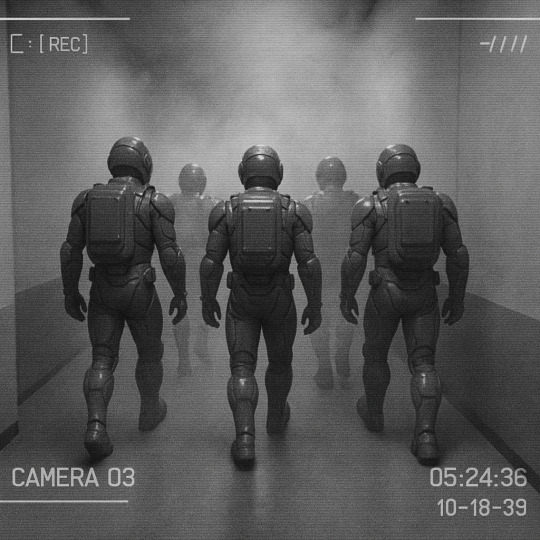
Technician: Everything is modular. The suit grows with them—literally. Sections adjust for body changes. The interior uses adaptive fit tech to stay secure and comfortable. There’s a full environmental seal with air filtration. Internal cooling and heat regulation. And yes—before you ask—it includes full human excreta management. No, they don’t take it off for five days straight. Yes, they’re fine.
[Parents on the call nod, a few chuckle awkwardly.]
Instructor PJ40E: The visor you’ve seen? That’s not just for looks. It includes a HUD—heads-up display—customizable per training protocol. It helps them focus on the task at hand. During drills, it greys out distractions. During emergencies, it highlights objectives and even offers prompts based on their role.
Technician: And we can monitor all of it live. From this room—and from our control center back at ValorTech—every suit’s vitals, activity, and external conditions are tracked in real time. If a cadet stumbles or hesitates, we know. If their pulse spikes, we know. If they whisper something about sneaking a snack during drill? Well, technically, we know that too.
[Laughter from some parents. One raises a virtual hand.]

Parent (voice): But isn’t it overwhelming for a 16-year-old to be under surveillance 24/7?
Instructor PJ40E: At first? It’s an adjustment. But this isn’t surveillance for punishment. It’s support. We see them. We protect them. And they learn to trust the system. That kind of psychological security builds confidence. They know we’ve got their back.
Technician: And every suit records a personal log. So if a cadet feels something’s off—mentally or physically—we can review and respond. No guesswork. No stigma.
Instructor PJ40E (warmly): We’re proud of your sons. And you should be too. They’re learning to move, think, and act as a team. The suit is part of that. It shapes them. It challenges them. And in the end—it supports them in becoming something stronger than they were.

[The screen transitions to a short clip montage: Cadets in formation, helmet visors down, HUDs glowing. A glimpse of a biometric dashboard. A technician adjusting fit settings. Then, a cadet—ID 871CV—laughing, helmet tucked under his arm, walking with his team after a drill.]
10 notes
·
View notes
Text
The Difference Between Low, Medium, and High Voltage Switchgear

Switchgear plays a critical role in the generation, transmission, and distribution of electrical power. It ensures safe and efficient operation by controlling, protecting, and isolating electrical circuits and equipment. But not all switchgear is created equal — low, medium, and high voltage switchgear are designed for different voltage levels and applications.
Understanding the differences between these types is crucial for electrical engineers, electricians, project managers, and anyone involved in power systems. In this article, we break down what sets them apart in terms of voltage range, components, applications, design, and safety considerations.
What is Switchgear?
Before diving into the differences, let’s clarify what switchgear is.
Switchgear refers to the combination of electrical disconnect switches, fuses, or circuit breakers used to control, protect, and isolate electrical equipment. It is essential for de-energizing equipment for maintenance and for clearing faults in the power system.
Classification by Voltage Level

Low Voltage Switchgear (LV)
Voltage Range:
Up to 1,000V AC (typically 400V/690V in 3-phase systems)
Key Components:
Miniature Circuit Breakers (MCBs)
Molded Case Circuit Breakers (MCCBs)
Residual Current Devices (RCDs)
Contactors and relays
Busbars, metering, control panels
Applications:
Residential and commercial buildings
Data centers and office spaces
Light industrial automation
Control panels and motor control centers (MCCs)
Characteristics:
Compact and easy to install
High frequency of operation
Relatively simple maintenance
Often enclosed in modular panels
Standards:
IEC 61439
NEC (National Electrical Code)
Medium Voltage Switchgear (MV)
Voltage Range:
1kV to 36kV (sometimes up to 72.5kV)
Key Components:
Vacuum circuit breakers (VCBs)
SF₆ (sulfur hexafluoride) insulated switchgear
Current and voltage transformers (CTs, VTs)
Protective relays
Grounding switches
Applications:
Electrical substations
Large factories and industrial plants
Railways and airports
Renewable energy farms (wind/solar)
Characteristics:
Higher insulation and safety requirements
More robust protection systems
Often installed indoors or in compact outdoor enclosures
May use gas-insulated or air-insulated designs
Standards:
IEC 62271–200
IEEE C37 series
High Voltage Switchgear (HV)
Voltage Range:
Above 36kV (commonly 66kV, 132kV, 220kV, up to 765kV)
Key Components:
SF₆ circuit breakers
Air blast or oil circuit breakers (older systems)
Gas-insulated switchgear (GIS)
Disconnectors and earthing switches
High-end protection relays and SCADA integration
Applications:
National and regional power transmission networks
Power generation plants
Interconnecting large substations
Critical infrastructure (e.g., large data centers, airports)
Characteristics:
Complex installation and high-cost infrastructure
Requires rigorous safety procedures and specialized training
Often installed outdoors or in GIS (Gas Insulated Switchgear) format
Includes extensive monitoring and automation
Standards:
IEC 62271–100 (HV circuit breakers)
IEEE C37.06
ANSI C37 series
Safety Considerations

Always follow local electrical codes, use personal protective equipment (PPE), and conduct routine maintenance regardless of switchgear type.

Conclusion
Choosing the right switchgear type is critical for ensuring safe and efficient power distribution. Whether you’re designing a residential panel or a high-voltage substation, knowing the difference between low, medium, and high voltage switchgear helps you make informed decisions about equipment, safety, and performance.
Mastering this knowledge isn’t just good practice — it’s essential for anyone serious about a career in the electrical field.
10 notes
·
View notes